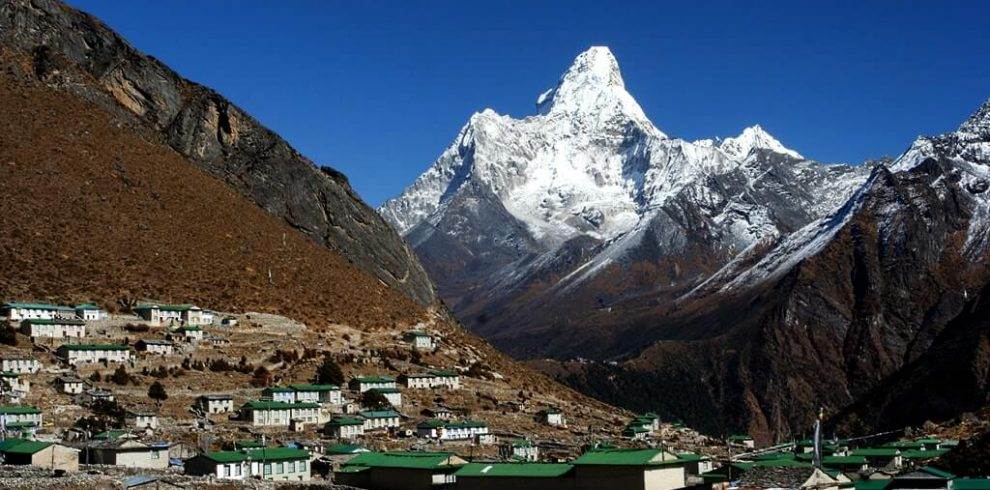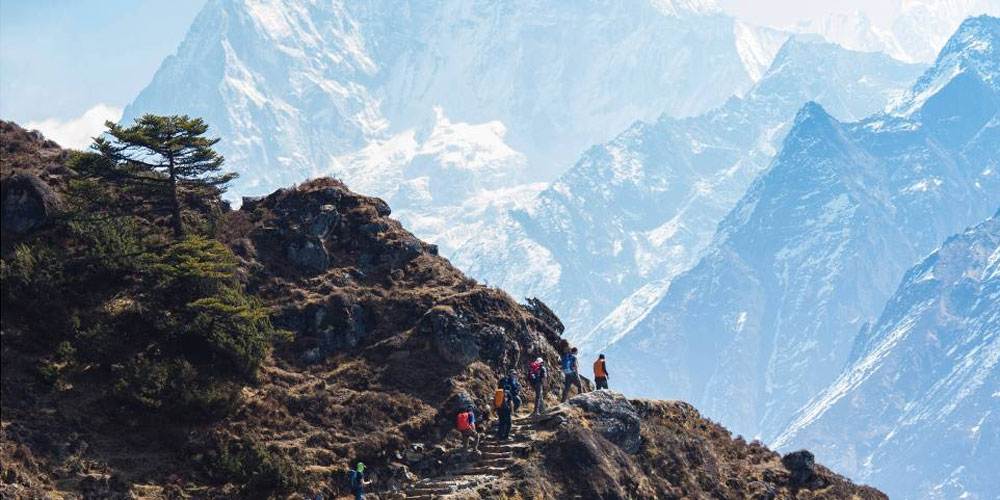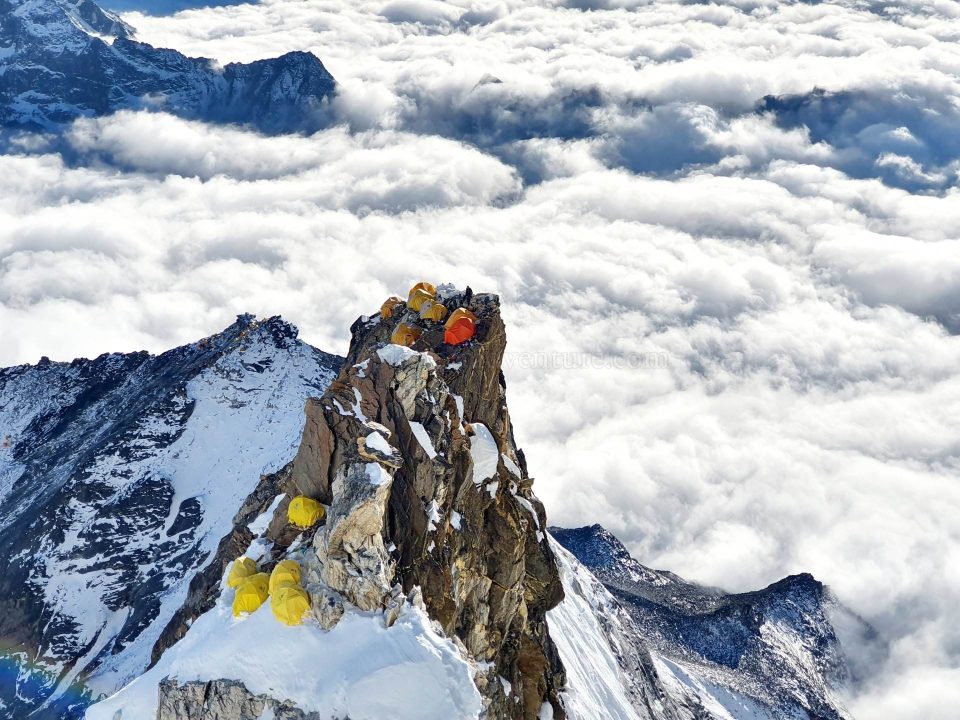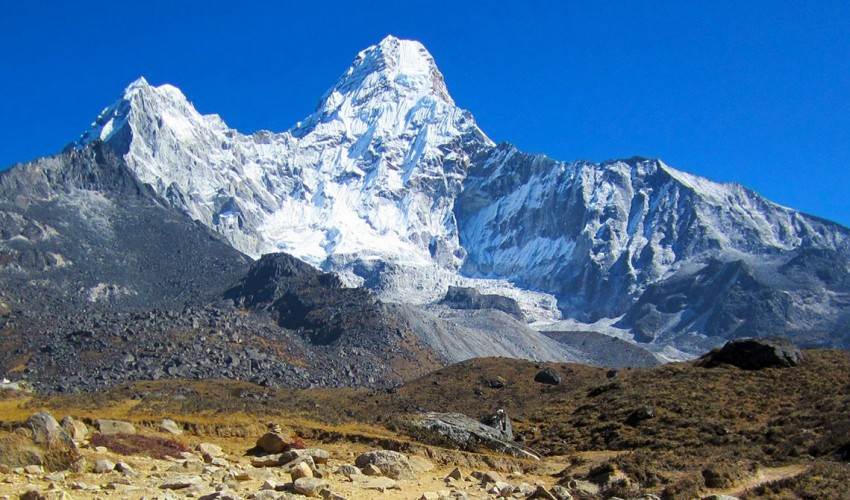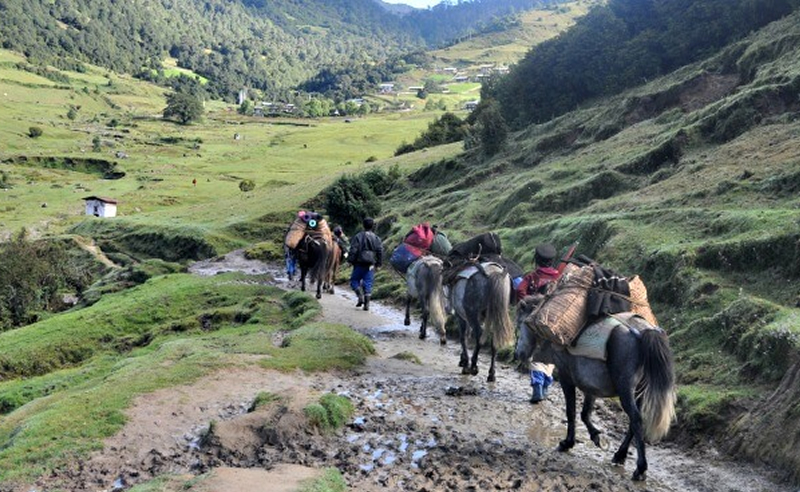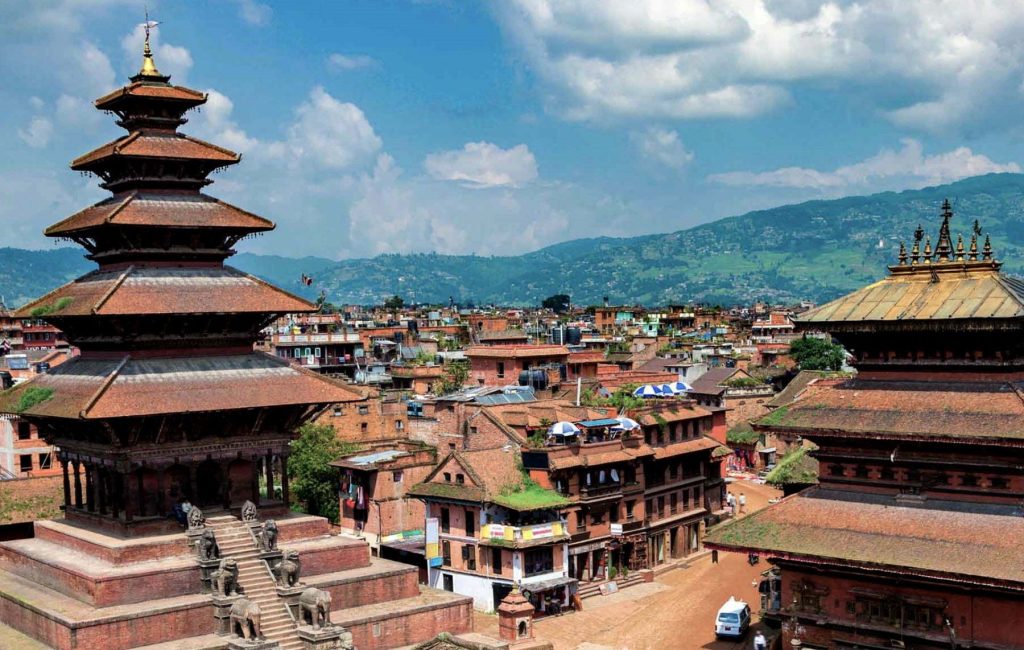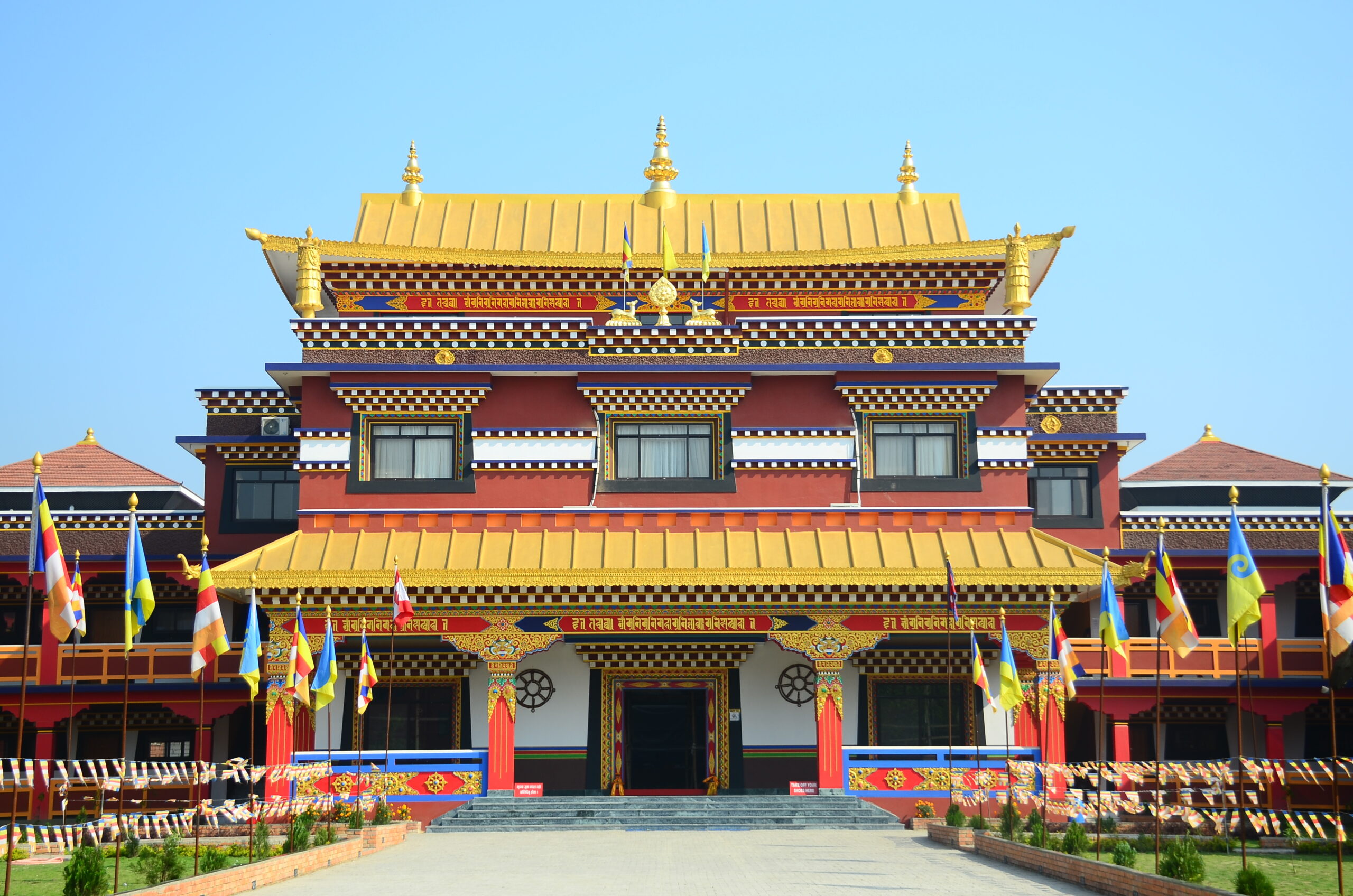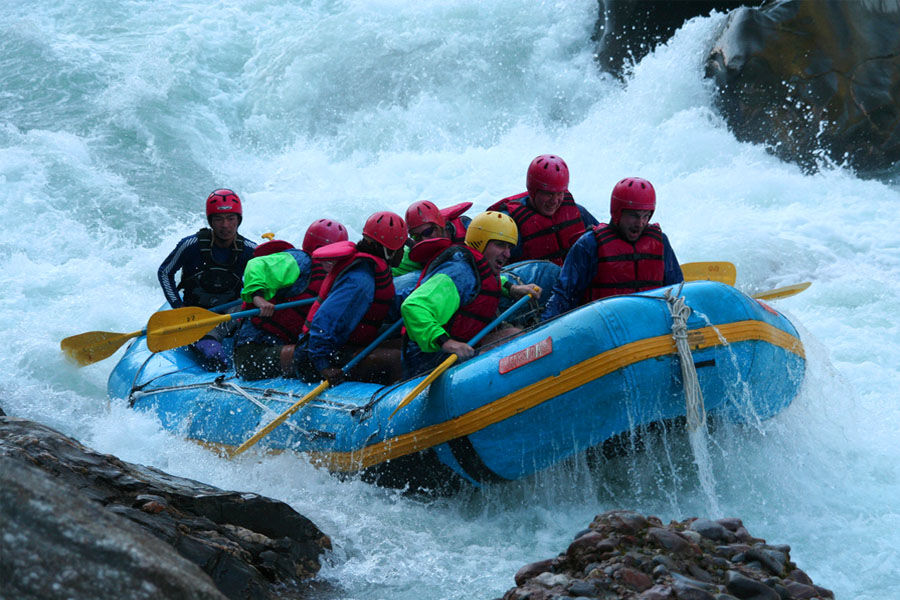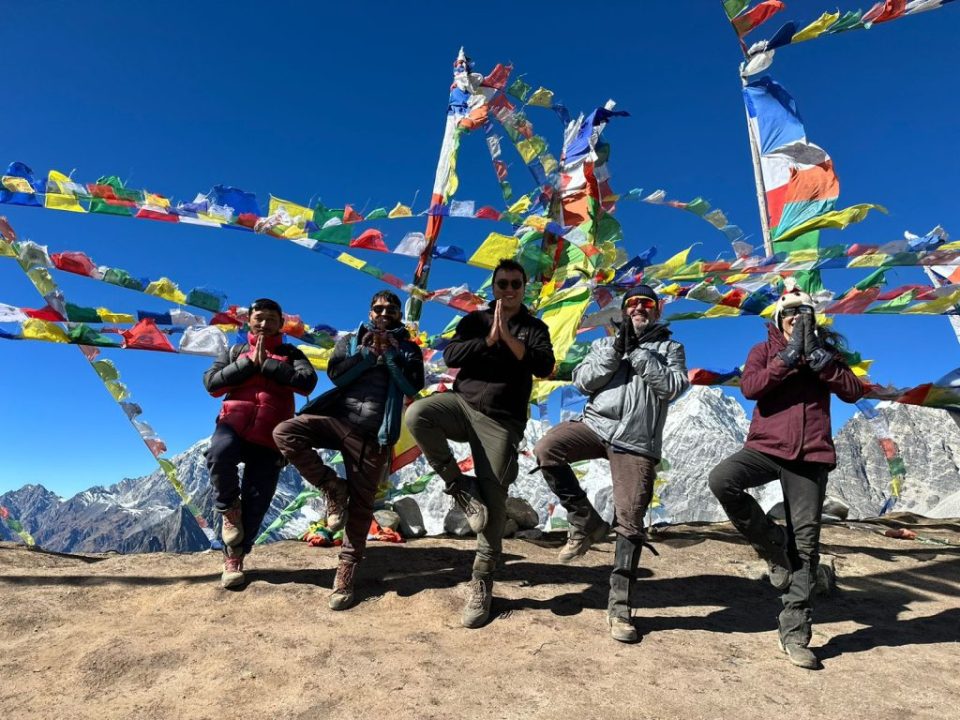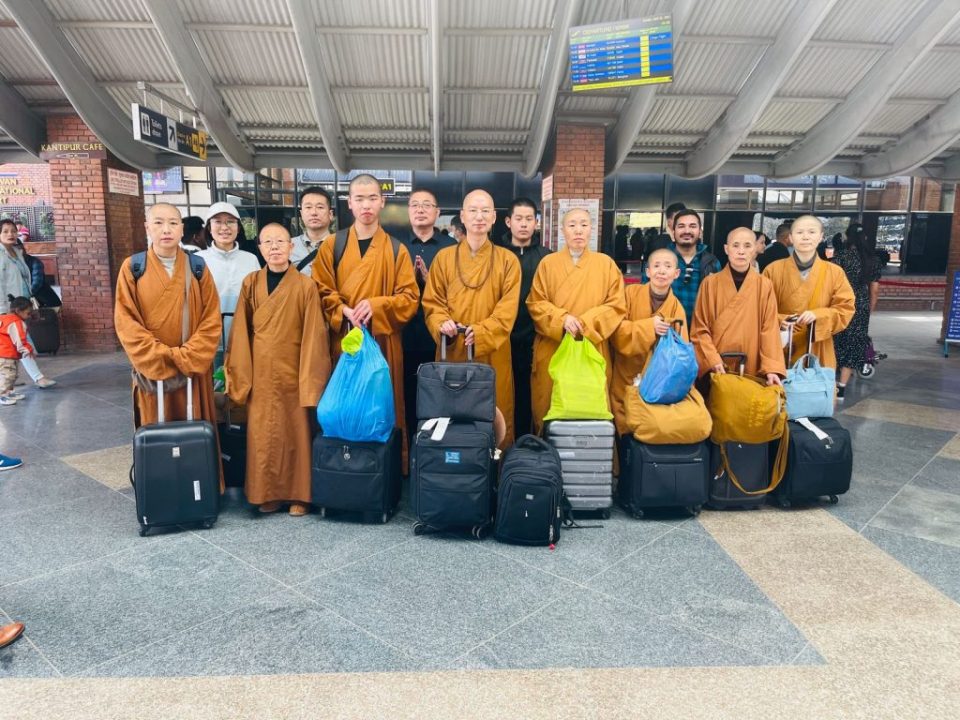Ama Dablam Base Camp Trek
Trip Introduction
If you are looking for a mountain adventure, this is your best choice. On another trek in the Everest region, we saw the magnificent scenery from the Himalayas to the foot of the Ama Dablam. The Sherpa people in this area attach great importance to Ama Dablam. Ama Dablam is also called “Matterhorn” by Westerners, which means “Mother’s Necklace“. The long moraines on both sides of the peak resemble a mother “Ama” protecting her child. Glacier displayed a “Dablam” necklace, a traditional double pendant with deities worn by Sherpa women.
Your trek begins in Lukla and proceeds to the Sagarmatha National Park entrance point, then to Namche Bazaar. The trail then continues to Pangboche village for a day trip to Ama Dablam Base Camp before returning to the center. The trek takes you through Phortse village, back to the Monjo exit point, and then to Lukla. Trekking to Ama Dablam Base Camp informs you about the Sherpa culture as you pass by historic sites and gompas. This trek provides us with an opportunity to get a close-up view of this elegant mountain. This is one of the best options in the Everest region for thrill-seekers looking for a memorable view of the Himalayan range of the Khumbu region as we walk past landslide trails and glaciers.
The 12 days of this trip include eight days of trekking in the Khumbu and Everest regions, leading at the base of the towering Aba Dablam. Along the way, stop at Tengboche Sherpa monastery, have lunch at Ama Dablam base camp, and acclimate at the world-famous Namche Bazaar. The trek’s difficulty level ranges from easy to moderate. The Ama Dablam Base Camp trek is ideal for those who want to see the unspoiled parts of the Everest region while also experiencing traditional Sherpa culture and mountain views. This trek is for courageous trekkers who are physically fit and have enough time to acclimate to high altitudes. This package is for anyone who wants to reach the foothills of Ama Dablam with an added flavor of exciting adventure. It is a less populated trekking route.
Trip Facts
| Country | Nepal |
| Region | Everest |
| Duration | 12 Days |
| Grade | Challenging |
| Maximum Altitude | 4,600m/ 15,091ft |
| Attraction | Tengboche Monastery, Mt Ama Dablam |
| Accommodation | Hotel, Lodge, Tea houses |
| Meals | Breakfast, Lunch, Dinner |
| Best season | Feb, Mar, Apr, May, Oct, Nov, Dec |
Trip Highlights
- Scenic flight to world highest altitude airport- Tenzing Hillary Airport, Lukla. The only airport in the Khumbu region is both exciting and spectacular.
- Hike through the UNESCO World Heritage Site of the Sagarmatha National Park.
- Analyze the Sherpa people’s culture and way of life.
- Enjoy the Everest region’s rich flora and fauna.
- A near of the glorious mountains Lhotse (27,883 ft/8,498 m), Everest (29,035 ft/8,848.48 m), AmaDablam (22,487 ft/6,854 m), and Makalu (27,838 ft/8,485 m) are the highest mountains in the world.
- Get a glimpse of the Sherpa people’s culture and the way of life in the main Sherpa town of Namche Bazaar, and the Dudh Koshi River’s valley.
- Visit Tengboche Monastery, the Khumbu region’s largest Buddhist monastery.
- Mt. AmaDablam (6,856m/22,494ft) is one of the country’s leading peaks.
Is this trek appropriate for you?
- The Ama Dablam Base Camp Trek is challenging. If you are physically and mentally prepared, fit, and willing to do so, you can easily complete this trek.
- It is a trek to the summit of Ama Dablam, though several of the hills can be difficult and seemingly endless at times.
- You’ll be on the trail for 12 days. The path can be finished in as little as 3 hours or as much as 7 hours.
- The walk is not difficult; there is no climbing or scrambling; however, the path is rocky and hilly, ending on moraine and then on its glacier.
- You will gain 400 to 600 meters in elevation each day while trekking. The highest point on your trek will be the Ama Dablam base camp (4,600m/15,091ft)
- The weather and remoteness of this trek, as well as dealing with the high altitude, require a slow pace and the need to stay hydrated.
Itinerary
| Days | Activities | Duration |
| 1. | Arrival at TIA Kathmandu | |
| 2. | Fly to Lukla and Trek to Phakding (2,610 m/ 8,563 ft) | 3-4 hrs |
| 3. | Trek from Phakding to Namche Bazaar (3,440m/ 11,290ft) | 5-6 hrs |
| 4. | Acclimatization day in Namche Bazaar | |
| 5. | Trek from Namche Bazaar to Tengboche (3,867m/ 12,687ft) | 4-5 hrs |
| 6. | Trek from Tengboche to Pangboche (3,985m/ 13,074ft) | 2-3 hrs |
| 7. | Hike from Pangboche to Ama Dablam Base Camp (4,570m/ 15,000ft) | 4-5 hrs |
| 8. | Trek from Pangboche to Phortse (3,680m/ 12,073ft) | 4-5 hrs |
| 9. | Trek from Phortse to Monjo (2,835m/ 9,301ft) | 6-7 hrs |
| 10. | Trek from Monjo to Lukla (2,840m/ 9,316ft) | 5-6 hrs |
| 11. | Fly from Lukla to Kathmandu (1,350m/4,429ft) | 30 mins |
| 12. | Final Departure |
Itinerary
Departure from : Kathmandu, Nepal
Arrival On : Kathmandu, Nepal
Day 1
Arrival at TIA Kathmandu
Arrival at Nepal’s Tribhuvan International Airport. Please proceed to the exit of the arrival hall after completing the visa formalities and collecting your luggage at the airport. Your tour guide will meet you outside the arrival hall and accompany you to your hotel in Kathmandu. After you’ve had a chance to refresh, your trek leader will do short briefing about your trek and tomorrow schedules in the lobby of your hotel in the evening. Dinner and Overnight at the Hotel.
Day 2
Fly to Lukla and Trek to Phakding
Having a delicious breakfast early in the morning, move to airport to fly to Lukla- the beginning point for the Ama Dablam Base Camp trek. After a 30-minute flight with a spectacular view of Nepal’s central highlands and mountains, we arrive at the Lukla airport. After that, we’ll meet up with the rest of our trekking team in Lukla and continue our journey to Phakding for the day. We will get our Khumbu Pasanglhamu Rural Municipality permit while entering the first village of Khumbu Region on the way to Phakding. After a 3 to 4hour hike down a steep downhill trail through the Chaurikharka village, Ghat, lush forest and crossing the suspension bridges over the Dudh Koshi River, we arrive in Phakding, a little village on the banks of the beautiful Dudh Koshi River. Stay the night at a local lodge.
Day 3
Trek from Phakding to Namche Bazaar
After breakfast, check out from the lodge we’ll continue on from Phakding to Namche Bazzar. Move up into the Sagarmatha National Park through Jorsalle Check point on Monjo. The Park has played an important role for preserving biological diversity as well as the rare flora and fauna of the Everest Region. Crossing a high suspension bridge (including the famous Hillary suspension bridge over Dudh Koshi River) and after crossing the bridge at the glacial Rivers’ intersection we gradually ascend to Namche Bazaar, the hub of the Khumbu region and the Sherpa capital. Ascending at a steady pace and passing by a waterfall. Beautiful rhododendron, magnolia, and massive oak forests now surround the track villages. The breathtaking views of Everest, AmaDablam, and Kongde RI will lift your spirits. Spend the night at a nearby lodge.
Day 4
Acclimatization Day in Namche Bazaar
Allow yourself a day to adjust. The first thing we will be doing is breakfast then stroll through Namche Bazaar. Today’s exciting point is learning more about this amazing mountain marketplace. We can start an acclimatization hike around Namche Bazaar, Namche Peak, Namche monastery, and the Sherpa Museum. “Namche” sculpted out of a rocky mountainside, is the business hub of the Khumbu Region. There are luxury and budget lodges, coffee shops, bakeries, internet cafés, ATM booths, pubs, and souvenir shops here. Staying at the lodge for the night
Day 5
Trek from Namche Bazaar to Tengboche
After breakfast in Namche, we’ll hike along the valley ridge, high above the Dudh Kosi River. The Khumbu region’s giant peaks, including Mount Everest, Lhotse, Nuptse, and Ama Dablam, will be visible for the first time. Pass through several villages and numerous tea shops before descending steeply to a river bridge at Phunki Tenga. The village is a good place to stop for lunch before continuing on the steep climb to Tengboche. Although this next crisscross path is exhausting, the views will be spectacular, with beautiful rhododendron forests, colorful birds, and stunning mountain scenery. Tengboche is a small village, famous for its legendary Buddhist monastery the largest in the Khumbu region- Tengboche Monastery is known as Dawa Chowling Gompa and from where you can see a spectacular panorama of the identified peaks especially Mt. Ama Dalam. If reached within 3 pm you can get to experience the daily worship celebration by monks in Tengboche Monastery. Staying at the lodge for dinner and the night.
Day 6
Trek from Tengboche to Pangboche
After a hearty breakfast, we set out for Pangboche, with spectacular views of Mt. Everest, Nuptse, Lhotse, Ama Dablam, and Thamserku in the distance. Our trek follows a gradual path with few ups and downs, with spectacular views of the Himalayas. Along the way, we see pheasants, musk deer, and on occasion, a herd of Himalayan Thar. Ascending through slopping up and down trek and crossing of the Imja River, we’ll arrive at Pangboche- the highest permanent settlement in the Khumbu region. Dinner and Overnight at the Lodge.
Day 7
Hike from Pangboche to Ama Dablam Base Camp and back to Pangboche.
Today we climb to a ridge high in a sheltered valley to Ama Dablam Base Camp. Its long ridges on each side resemble the arms of a mother (ama) protecting her child, and the hanging glacier resembles the Dablam, the traditional double pendant containing images of the gods worn by Sherpa women. Because Ama Dablam is one of the world’s most beautiful mountains, we may see climbing expeditions doing puja for the safe summit to Mt. Ama Dablam when we arrive at the base camp. This is an amazing trek because you leave almost all other trekkers behind and visit trails that are far less traveled. You’ll arrive at Ama Dablam Basecamp in time for lunch, where you can take in the incredible views and celebrate reaching your goal. Spending some time at Base camp and clicking photos return down the trail back to Pangboche. Overnight at the Lodge.
Day 8
Trek from Pangboche to Phortse
After having your breakfast, we’ll begin our trek with a climb past the monastery in Upper Pangboche, followed by a trek along with one of the most spectacular trails in the Everest region. You will be walking for approximately 4-5 hours. It is the high trail to Phortse (3800m), a less-visited village that is home to many Everest climbers. Overnight at the Lodge.
Day 9
Trek from Phortse to Monjo
After having your breakfast, you descend steeply to cross the river at Photse Tenga before climbing to Mong La (3973m), which provides your final breathtaking views of Ama Dablam. You’ll be walking for about 6-7 hours. You then descend to Namche Bazaar, rejoining the main Everest trail, and continue down to the village of Monjo. Overnight and dinner at the Lodge.
Day 10
Trek from Monjo to Lukla
After breakfast in Monjo, set out on the final day of the trek which will take you along the Dudh Kosi River to Lukla. You’ll walk from Monjo to Ghat for lunch before continuing through villages like Chaurikharka, Chumoa, Benkar, Phakding, and Chuthawa until you reach the Pasang Lhamu Memorial Gate, which marks the end of the trek. Rest for the day after we arrive in Lukla. Have a get-together with the local crew in the evening to celebrate the end of your trek. Dinner and overnight at the Lodge.
Day 11
Fly from Lukla to Kathmandu
After breakfast in Lukla, you’ll fly back to Kathmandu in the early morning. We will be transferred to your hotel upon arrival and will be able to spend the rest of the afternoon and evening at your leisure. Explore Kathmandu’s streets by foot, bicycle, or rickshaw, looking for souvenirs or seeing anything you missed at the start of your trip. Kathmandu has many things to do and many places to visit. Later in the evening, enjoy a farewell dinner with your successful trekking team members. Overnight at the Lodge.
Day 12
Final Departure
This is the last day of your stay in Nepal. Our representative will drop you at the airport three hours before your flight’s departure time.
Route Map
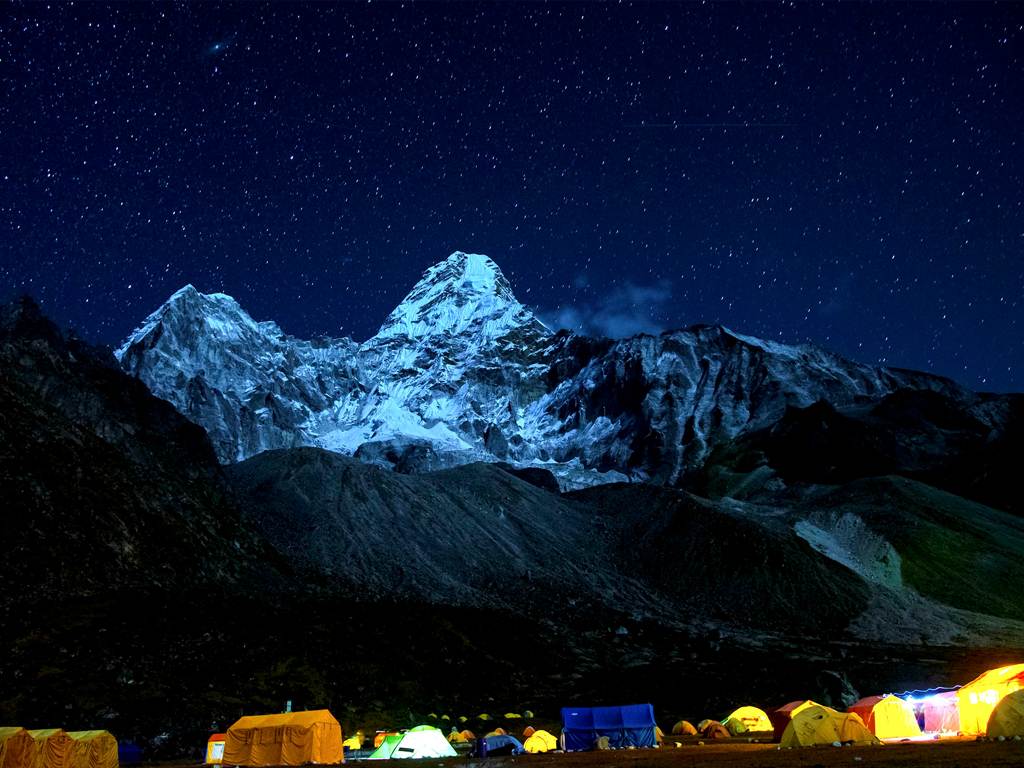
Altitude Map
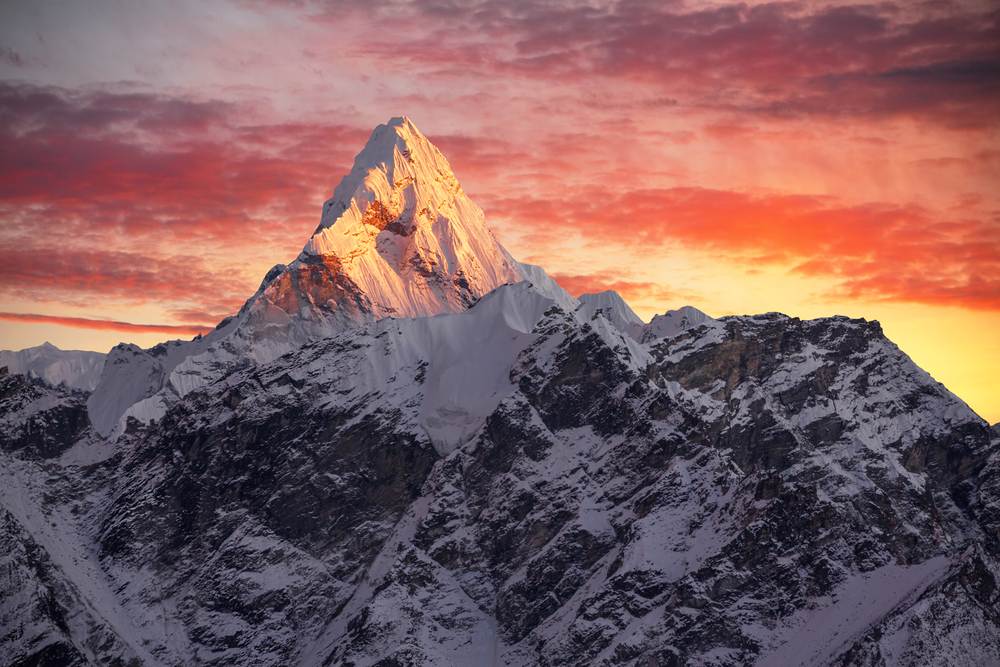
What's Included
- Arrival & Departure: Airport – Hotel transfer – Airport (Pick Up and Drop).
- Hotel Accommodation in Kathmandu: 2nights at Star categories hotel on twin sharing on bed and breakfast basis.
- Welcome Dinner and farewell dinner at Nepali culture restaurant in Kathmandu with Office’s Staff.
- Food & Lodging: 3 meals a day (BLD; including tea and coffee) along with accessible accommodation sharing at Hotel/Lodge/teahouse during the trek.
- Permit: All necessary paper works: Sagarmatha National Park permit & Khumbu Rural Municipality entry fee.
- All government and local taxes if necessary.
- Trekking Map: Everest Region Trekking map.
- Member transportation: – Air Transportation: (Domestic Flight) Fly from Kathmandu – Lukla and while returning Lukla.
- Drinking water: 2 liters of boiled water to carry on thermos per day per member.
- Guide: Government licensed Guide (English speaking) during the trek.
- Porter: Porters (2 trekkers: 1 porter) up to 15kg during the trek.
- Insurance: Insurance for all involved Nepalese staff during the trek.
- Comprehensive Medical kit.
What's Not Included
- Air Fare: International flight airfare (from and to Kathmandu).
- Nepal entry visa fee.
- Extra night in Kathmandu: Extra nights’ expenses in Kathmandu. In case of early arrival or late departure, early return from Trekking (due to any reason) than the scheduled itinerary.
- Personal Insurance: Travel and high-altitude insurance. *Mandatory
- Personal Expenses: Telephone calls, Internet, Toiletries, battery recharge, hot shower, laundry, soft drinks, beer, and any alcoholic beverages.
- Personal Equipment: Clothing, Packing Items or Bags, Personal Medical Kit, Personal Trekking equipment.
- Rescue Evacuation: Medical and emergency rescue evacuation costs if required. (Rescue, Repatriation, Helicopter, Medication, Medical Tests and Hospitalization costs).
Equipment List
What to bring ?
General
Tailor Your Holiday
Everyone has their own preferences in terms of destination, journey time, and budget. As a result, sticking to our plan isn't necessary. We will create a personalized itinerary for you that includes accommodations, transportation, meals, and tour guides. We guarantee you the best Tailor-made Package because this is your trip. You have the option to personalize it, as your liking. Let us Plan together to make your Vacation worth it.
Fixed Departure
Why Travel With Us?
Secure Online Payment, No Credit Card Fee
Travel with Locals. Support Locals
Lifetime Deposit
Private & Tailor-Made Trips
24/7 International Support
Support Local Communities & Donate to Charity
All Inclusive Price
Secure Online Payment, No Credit Card Fee
The ideal season to travel
January- February
Because there isn’t always a lot of snow in January, it is possible to walk to Everest Base Camp, but it will be cold. This is the coldest time of year, especially from early January to early February. This happens when there is a lot of snow in the mountains, which can lead to extremely cold temperatures. Though the daylight may be warm and impressive with clear skies, the nighttime would be extremely cold; however, it is perfectly fine to trek during these months because discovery world trekking ensures every possible safety during the trek; however, if you are allergic to extreme cold, you should not trek during these months; otherwise, people trek 12 months of the year and leave their footprints all over the world.
March- April
This is one of the best times of year to visit the Ama Dablam Base Camp. This month’s weather is spectacular. There will be breathtaking views of the Himalayan ranges and glaciers. March marks the start of the spring season, and the weather begins to warm up during these months. You can get to see the crimson rhododendrons blooming in these months. It’s the busiest month of the year on the Everest Region trails. Although the skies aren’t as clear in March and April as they are in the winter, the warmth to visibility ratio favors you.
May-June
This is also an excellent time for trekking, as it is just before the rain. Rainfall in Nepal begins at the end of June and lasts until mid-August. The trek is much more enjoyable during the spring and summer seasons. During this time, you can see red, blue, purple, and yellow rhododendrons beyond the trek from Namche. For nature lovers, May and June is the best time to trek.
July- August
Rainfall is at its heaviest below 3500 meters during this time. Flights to Lukla may be canceled due to heavy rain at the start or end of the trek, but trekkers can be seen trekking towards Ama Dablam base camp during those months. If you choose to trek during these months, it will be difficult but not impossible. Our guide will take care of your safety to the fullest, as it does every month, but because the route is not as favorable, it is not highly recommended to trek in these months, but the rainfall also provides spectacular views of the waterfall and avoids crowds, as it does in other months. The most important festival of Sherpas, “Dumji festival” falls during the end of June or early July.
September-October
This is also one of the best times of year for the EBC Trek. Because of the pleasant weather, this is the busiest season for tourists. As the monsoon fades, a perfect trekking climate emerges. The temperature rises to 20 degrees during the day and falls to 5 degrees at night. This is the season when trekkers enjoy the most trekking, with a clear sky and an amazing view of the mountains. In late Oct or early Nov the full moon, people in the Everest region celebrate the famous 19 days long colorful festival “Mani Rimdu” in Tengboche Monastery, but only the last 3 days are open for public.
November-December
As winter approaches, snowfalls begin in the Himalayas region, making trekking difficult. The nights become colder. November is the busiest month for visitors from all over the world, as it is the clearest month with sparkling days and breathtaking views of massive mountains. The temperatures during the day are very stable and consistent.
Flight to Lukla
Almost every trip begins with a flight from Kathmandu to Tenzing Hillary Airport in Lukla, a small single-landing runway airport high in the Himalayas. As it is the easiest way for your trek to Everest region.
- Lukla Airport is also known as the most dangerous airport in the world. This airport, which is only open when the weather is calm, and visibility is excellent.
- The Flight from Kathmandu to Lukla is about 30 min and the flight from Manthali to Lukla is about 20-25 min. Flight from Kathmandu to Lukla through helicopter is about 45 min.
- It’s impossible to say whether your Lukla flight will be canceled. If this occurs, your trip may be extended by one or two days. So, plan and add buffer days to your itinerary to ensure you don’t miss your international flight.
- Flights to and from Lukla are currently operated from Manthali Airport in Ramechhap rush hours at Kathmandu Airport during the high season (spring and autumn). Kathmandu is 132 kilometers (4 hours and 30 minutes) away.
- Helicopters have a little more flexibility when it comes to arriving at Lukla and can frequently make the flight in weather or visibility that a small plane would not be able to make. It is sometimes doable to switch your flight to a helicopter, but this can be expensive and there is no guarantee that you will arrive on time.
Altitude sickness
Beyond 2500m (8000ft), Altitude sickness is a sneaky monster that may attack even the fittest trekkers. These demands do everything in your power to prepare for altitude trekking and take things carefully throughout your Everest region journey. With increasing altitude, the amount of available oxygen decreases, which is the primary cause of high-altitude sickness. Ama Dablam base camp is located at an elevation of over 5,000 meters above sea level, where the atmosphere contains low oxygen, the wind gets stronger, and the air is thin making breathing difficult.
The Ama Dablam trek is a high-altitude trek that needs proper acclimatization. Your body requires time to adjust to thin air, so start at a lower altitude and work your way up. Some of the symptoms of Altitude sickness are:
- Increased breathing.
- Increased urination.
- Restless sleep.
- Periodic breathing at night because of altitude.
- Dehydration.
- Shortness of breath.
- Extreme fatigue.
- Respiratory failure.
- Cerebral edema.
- Coma.
Certain care should be made to ensure that the situation does not worsen. However, if the symptoms worsen, you may need to return to a lower height and seek medical help. There are, however, several other precautions you may take while trekking in the Everest region to lessen your risk of altitude sickness.
- Trekkers can modify their bodies by walking and ascending gently, as our bodies need time to adjust to the level of oxygen. For high altitude trekking, at least one day of acclimatization rest is essential, and you should ascend as high as possible before returning to a lower altitude for the night.
- You should do various strength training exercises such as running, cycling, jogging, push-ups, and going to the gym to acquire strength and stamina for your adventure.
- As the air gets increasingly thin, an increase in elevation reduces oxygen levels, and in the Everest region trek, an increase in altitude also means less vegetation. The consumption of alcoholic beverages, cigarettes, and tobacco decreases the body’s water content.
- The greatest remedy is to always stay hydrated. On your walk, instead of drinking cooled water, drink warm water.
- Diamox is the most effective altitude sickness medication; thus, you should bring a subscription with you on the trek. However, you should consult with your physician to see whether it is advantageous.
- Avoid sleeping pills to treat insomnia because they suppress breathing,
- If symptoms get worsen, do not travel any higher and consider descending to a lower altitude (approximately 300-600m). But if descent is not possible, a portable hyperbaric chamber (Gamow bag) can be used to simulate a lower altitude.
Things to know before traveling to the Everest region.
Drinking-Water
Especially for trekkers, it is very necessary to hydrate your body at a higher altitude than in lower elevations to avoid dehydration and altitude sickness. Lack of fluid can be the main hindrance during the trek. You should hydrate your body with at least 3-4 liters of water daily (Tea, soup, or normal drinking water).
Throughout the trek, you will come across tap and spring water, but it is not safe to drink without purifying it. You can buy the plastic bottle water in the teahouses but get expensive as you climb in the higher altitude, and it causes pollutes the local ecosystem, therefore we recommend you to use a Reusable water bottle or water pouch favorable for both hot and cold water.
During this trek, you might have to pay 0.50$- 3$ for a sealed bottle of water. Here are some ways that you can use to make the water drinkable.
- Boiled water
Boiling water is the best way to purify the water. As we are climbing to a higher altitude you need to boil the water for about 3-minute and season it with a pinch of salt before drinking. You can get free cold water in the teahouse but for boiled water, it cost around 1-2$ per liter and 3$- 5$ for a large pot.
- Purification tablets or electrolyte powder.
Purification tablets like chlorine or iodine tablets are commonly used tablets by trekkers to disinfect the water. 1 tablet is enough for a liter of water. It takes around 30 min for the tablets to dissolve and become drinkable. Water, purified by tablets may leave a taste in your mouth.
Electrolyte powder is another option. Electrolyte powder is a better way to purify water than tablets because electrolyte powder contains minerals such as salt, Potassium, Magnesium, which are important for your body during the trek.
- UV Light water purifier/ SteriPEN.
It is a simple, effective, economic, and environment-friendly way to purify water. It kills the bacteria and virus within 10 sec by exposing them to ultraviolet light using Steripen, without changing the flavor of the water. This is a highly recommended method of purifying water.
Electricity and Internet facility at Ama Dablam Base Camp Trek.
Electricity facility.
Despite the challenging geography and weather conditions, the Everest region has been providing electricity and access to the Internet.
The lower part of the Everest region (Lukla, Phakding, Namche) is hydroelectrically powered, thus you can enjoy free electricity and internet service but as you climb up to the higher part of Everest Region, they rely on solar power electricity so there will be no charging socket in your room. There is a commonplace for charging, and you will be charged extra from the use of electricity for charging on different bases and voltages of your device.
Charging a mobile phone cost 1.5$- 5$ per hour (from Dingboche onward)
Internet Facility and Service
Internet and network facility is needed to contact your family, friends, and employee, to post updates and upload photos during the trek.
Everest link has been providing an internet facility throughout the Everest region.
You can purchase an Everest Link WI-FI card at the lodges and use the Everest Link hotspots to connect to the internet anywhere on the path within Everest Region.
Cost of Everest Link WI-FI card:
-10GB= NRP 2000/ 17$
-20GB= NRP 3000/ 25$
(Valid for 30 days)
NCell and NTC cellular service has been providing the network and internet facilities in Everest Region. You can buy the NCell or NTC sim card from the stores either in Kathmandu for 1$ or in Lukla and Namche Bazaar for 3$-4$. By taking data packages you can use the internet from NCell and NTC up to Tengboche. So, it’s better to take the Everest link Wi-fi card if you want an internet facility up to Ama Dablam base camp.
NTC cellular service is most preferred over NCell. NTC provides good service and signal connectivity, in comparison to NCell.
| Buy NTC data package
Dial*1415# |
Cost of data package in NTC:
-14GB=7$ (Valid up to 28days -30GB=15$ (Valid up to 90 days) |
Check balance
Dial *1415# |
| Buy NCell data package
Dial *17123# and select. |
Cost of data package in NCell:
-15GB=10$ -25GB= 12$ (Valid up to 30 days) |
Check balance
Dial*101# |
Document needed to buy a sim card.
For foreigner = 1 passport size photo, Passport photocopy, or valid identity card.
For Nepali = 1 Passport size Photo, Photocopy of Citizenship.
Some useful tips to reduce the use of electricity.
- Extra batteries for the camera.
- Power bank with 5000-10000mAh.
- The solar charger and solar lamp (LuminAID Lamp).
- As possible less usage of a device with low brightness, GPS, and WI-FI off.
Accommodation, Meal, and Transportation
Accommodation
We will accommodate in star hotel during our stay in Kathmandu. In Lukla, Phakding, and Namche Bazaar we will stay in lodges. For the rest of the stop, we stay at teahouses.
Meal
During the trek, we will provide you three-time meals. You can choose from the given menu.
Breakfast– French toast, Cornflakes, Cereal, Pancakes, Bread butter, Eggs, Oatmeal, Porridge, Tea, etc.
Lunch– Dal Bhat (Rice, vegetable curry, meat curry, Lentils, Tomato Chutney, Salad, Papad) Vegetable noodle soup, Chicken noodles soup, Garlic soup, Fried noodles, Fried rice, Thukpa, Fried potato, Mo: Mo, etc.
Dinner– Dal Bhat (Rice, vegetable curry, meat curry, Lentils, Tomato Chutney, Salad, Papad) Vegetable noodle soup, Chicken noodles soup, Garlic soup, Fried noodles, Fried rice, Thukpa, Fried potato, Mo: Mo, etc.
Besides these, there are a variety of other options of food. You can buy it from your pocket.
Transportation
By Bus- from Kathmandu airport to hotel at Kathmandu and vice-versa.
By Air- Flight to Nepal.
Flight from Kathmandu to Lukla and back.
Guide and Staff Arrangements
Throughout the trek, all your activities will be handled by our well-qualified and professional staff. We will do all the escorting. We are providing you with a highly experienced and licensed local Sherpa guide with fluent English speaking and has excellent communication skills. We will accompany you from Kathmandu and guide you to Ama Dablam Base camp. Each group of 4-5 trekkers will be assigned an assistant guide, as well as a porter for two trekkers (2*15kg =30kg). If your luggage weighs more than 15kg you will be provided a porter individually but you will be charged for 2 people.
All our lead guides, assistant guides, and potters are well professional and experienced. So, we hope for your respect and cooperation with us throughout the trek.
A typical day on the Ama Dablam Base Camp Trek.
Every day will begin with the ringing of your alarm clock at 6 a.m. and a knock on your door from your guide with the invitation of breakfast. Get up, have breakfast, pack your backpack and get ready to start your day’s walk by 7 a.m. We need to start our trek early to avoid the scorching sun as in midafternoon the wind gets stronger compared to morning in higher altitudes.
You’ll wander along the trail enjoying the scenery, clicking photos, creating memories, passing by other travelers, interacting with your guide, hearing each other’s stories. Lunch will be served at a local teahouse in the late afternoon (1-2 am). Having lunch and an hour of rest, we will proceed to the day’s final destination as per the itinerary.
On arrival at the destination, check into your accommodation. Get freshen up and some rest. As every teahouse where we stay has a large common dining area with a wood-burning stove in the center, there you will get to meet many travelers. You can sit there, laugh at each other stories, play cards, sing songs, play music, and have a good time. This will help you forget all the tiredness of the day. Later in the evening, you will have your dinner together. After dinner, your guide will give a short briefing about the next day’s trek regarding when you must get up when we have to start our trek the next day, where we will stay the next day, how many hours we have to walk and so on.
You will walk for a minimum of 3hrs to maximum 7hrs during this trek in a day. During the acclimatization day, hike around the small peak or viewpoints. At night enjoy the view of sparkling stars floating in the clear sky above the cold wind. Every stop might not be iconic but these 12 days trek to Ama Dablam Base camp will give you unforgettable emotions. Your hard walk will be paid off on reaching each destination with lifelong memories.
Nepal Tourist Visa and permits details
To travel to Nepal, you’ll need a tourist visa that is valid for the period of your stay in Nepal. Better, if you have a tourist visa valid for at least 2 months because anything can happen during the trip, and staying in Nepal after your visa expires would result in you paying a penalty. Apply for a visa at your nearest Embassy of Nepal or obtain an On-Arrival visa at immigration in Tribhuvan International Airport, Kathmandu. But it’s better to contact your nearest Nepalese Embassy.
Here are the documents that you need, to apply for the tourist visa.
- The Tourist Visa Application Form for Nepal (Fully completed online and printed)
- Original Passport with at least 2 blank pages and validity of at least 6 months.
- Photocopies of your passport’s information page.
- At least 2 recent passport-sized photos of yourself with white background.
- Proof of accommodation in Nepal.
- Valid travel and return flight tickets.
- A bank statement from the last 3 months with a minimum closing balance of NPR 2, 00,000.
- Receipt of the visa fee for Nepal.
Note: 15 days visa cost USD 30. Our trip is for 12 days, so you can apply for 30 days tourist visa that costs USD 50 so that if you want you can spend more time in Nepal.
Entry permits and Requirements
The Entry permits that you need for the trekking in the Everest region are;
| Trekking permits | Foreign Nationals | SAARC Nationals | Nepali Citizens | |
| 1 | Khumbu Pasang Lhamu Rural Municipality Entrance Permit | NPR 2,000 per person (for the first 4 weeks)
NPR 2,500 per person (beyond 4 weeks) |
NPR 2,000 per person (for the first 4 weeks)
NPR 2,500 per person (beyond 4 weeks) |
NPR 2,000 per person (for the first 4 weeks)
NPR 2,500 per person (beyond 4 weeks) |
| 2 | Sagarmatha National Park Permit | NPR 3,000 per person per entry + 13% vat.
(Approx. 34$) |
NPR 1,500 per person per entry +13% vat
(Approx. 15$) |
NPR 100 per person per entry +13% vat
(Approx. 1$) |
Note A Khumbu Rural Municipality Entrance permit must be obtained from the Rural Municipality desk at the Lukla checkpoint.
Permits for the Sagarmatha National Park can be obtained from the Nepal Tourism Board, Bhirkuti Mandap, Kathmandu, and from the Sagarmatha National Park entrance gate at Monjo. To save time, we recommend that you obtain a Sagarmatha National Park Permit in Kathmandu.
For more information about Trekking Permit here is the link.
(If you are traveling from a travel/trekking agency your agency will arrange all the Permits.)
Documents required to get these Trekking permits.
- Complete the form with your passport details.
- 2 Passport size photo.
- 2 Photocopy of passport valid for at least 6 months.
For more information contact us.
Travel Insurance
Trekking in Nepal is not less than an adventurous and sometimes dangerous activity, especially at high altitudes. So, before visiting Nepal for trekking trekkers need to have travel insurance. During this 12 days Ama Dablam Base Camp trek you might come across some physical injury, illness, sudden accident during the trek and all the medical expenses and loss has to be bear by yourselves.
So, you need to have a travel insurance that will cover all your risk up to the altitude of 4,600 m (Ama Dablam base camp).
Choose an insurance policy that cover all of your possible risks from the start of your journey to your final destination. The following threats should be covered by your travel insurance:
- Cancellation of Domestic and International flights.
- Lost and stolen of baggage and passport.
- Hospital and Medical expenses (physical injury, Acute Mountain sickness, Altitude sickness, sudden accident)
- Emergency rescue such as Helicopter.
- All high-altitude trek dangers up to 5,600m.
You need to choose your travel insurance wisely so that, in the case of such incident, your travel insurance will cover the costs.
You can get your travel insurance in either your home country or Nepal.
Responsible Travel
As the Everest region is not only the gateway to Mount Everest but is also the homeland of Sherpa. Besides being called the mountainous region, the Everest region is also known for the Sherpa’s traditions; cultures, Tibetan culture, and eco-friendly environment. Mt. Ama Dablam means “Mother’s Necklace”. In the country where mothers are worshiped, Mt. Ama Dablam has its importance in the heart of the Sherpa people. Majority of People in the Everest region practice Buddhism and Tibetan culture.
You have to respect the local people, their culture, religion and try to limit any negative activities that will impact their local culture and environment. You can learn some Nepali greetings words to greet them respectfully. We expect you to dispose of the plastic garbage (food wrappers, plastic water bottles) properly. You might encounter many rare species (Lophophorus, Musk Deer, Himalayan Tahr, Blood Pleasant, Himalayan Monals, Martens, Tibetan Snowcock, Golden Eagle, and some others) during this trek, you rather not disturbed them. All travelers should travel responsibly in these regions. While visiting the monasteries you have to follow the rules of the monastery. Ask for permission before entering and to click the photo in any monasteries.
Your one small step towards them can make a big impact and change on them and their daily life. Your responsible travel will lead to sustainable tourism in Nepal.
Essential Backpack items for Ama Dablam Base Camp Trek.
The bag of a trekker also reveals the trekker’s level of experience. A good trekker should be a smart backpacker. You should be pre-prepared for the things that you need in the trek.
Here are some of the things that you need to take with you for the trek.
Travel documents
- Airline tickets with the itinerary.
- Travel insurance policy documents.
- Valid passport.
- Copies of passport.
- Passport-sized photos.
- Nepalese cash.
- Travel permits.
Clothing
- A pair of waterproof trekking shoes or hiking boots.
- A pair of flip flop slippers or running shoes.
- 2 sets of thermals (leggings and tops)
- 3-4 pairs of hiking long sleeve shirts or tops.
- 2 pairs of hiking shorts and pants.
- 2 fleece jumpers or a set of tracksuits.
- Good quality windproof down jacket.
- Lightweight waterproof rain jacket and pants.
- Neck gaiter, leg warmer, and packet of pocket hand warmers.
- 4-5 pairs of quick-dry socks, underwear, sports bra.
- Pair of inner and outer gloves.
- Knitted Hat, sun cap, beanie, or bandana.
- Glacier Sunglasses and eyeshade.
Trekking equipment
- Waterproof trekking bag of 40-50 liter and Rucksack of duffel bag (if your backpack is not enough for all your item and need a potter).
- Reusable water bottle (both hot and cold) of at least 1-2litre.
- A sleeping bag and sleeping bag liner.
- Trekking stick/ poles.
- Crampons (if you are trekking in the Winter season, Jan-Feb).
- LED Headtorch or solar lamp (LuminAID lamp).
- Stuff sacks, plastic bags.
- Plug adapter, Charging appliances, power bank, batteries.
- Pocket knife.
- Travel Wallet.
Toiletries
- Rolls of Toilet paper, wet wipes, and tissue.
- Medium-sized quick-drying towel.
- Toothbrush and toothpaste.
- Hand sanitizer.
- Sunscreen, lip balm, body lotions.
- Deodorants.
- Portable mirror.
- Shampoo and soap.
Personal First Aid Kit
- Antibiotics
- Painkillers, Paracetamol, ibuprofen, aspirin, Nicole
- Sanitary pads
- Bandage.
- Anti-inflammatory spray.
- Anti-Nausea tablets.
- Anti-diarrhea pills or power.
- Altitude sickness tablets.
- Water purifying tablets or electrolyte powder.
- Mosquito and Insect Repellent
- Salt or anti-leech oil (If traveling in the rainy season, July- Aug)
- Earplugs
You can buy or hire trekking clothes and equipment in Kathmandu. If you are buying it, you have to allow an extra day for shopping; however, if you are hiring it, you must inform us in advance so that we can arrange it before you arrive in Kathmandu. This way you can reduce the weight of your luggage and save time and money.
Branded trekking clothes and equipment are available around the Thamel area at a reasonable price.
Note– Kathmandu- Lukla flight has a luggage allowance of 15 – 20 kg per person. For extra baggage, they charge 2$ – 3$ per kg. So, you can wear your trekking boots and jacket to reduce the weight. Have a hand carry bag for your passport, money, medicine, and pair of clothing. You can leave some unnecessary items in a hotel in Kathmandu also.
Ama Dablam Base Camp Trek
Trip Reviews
Lorem ipsum dolor sit amet, consectetur adipisicing elit, sed do eiusmod tempor



